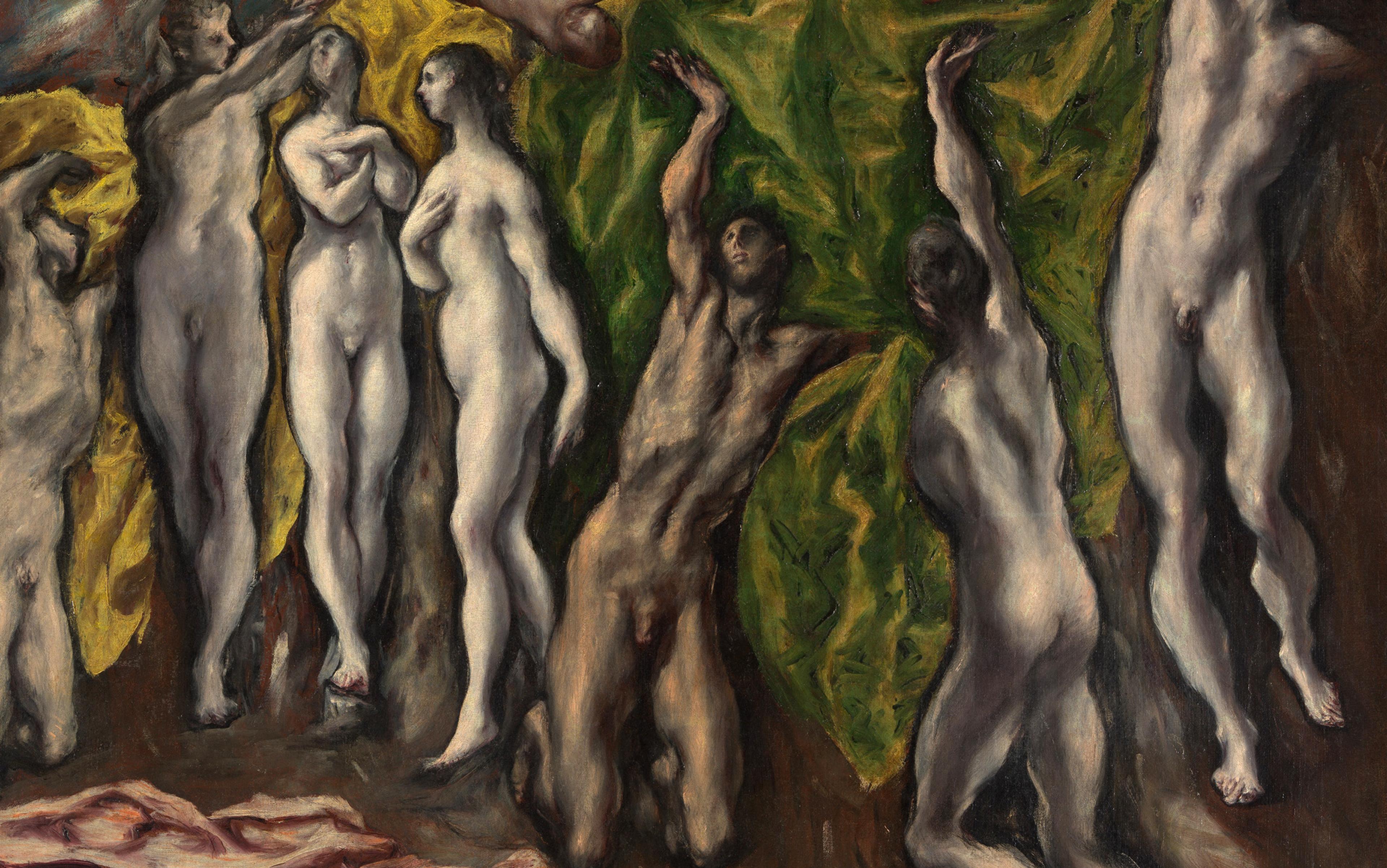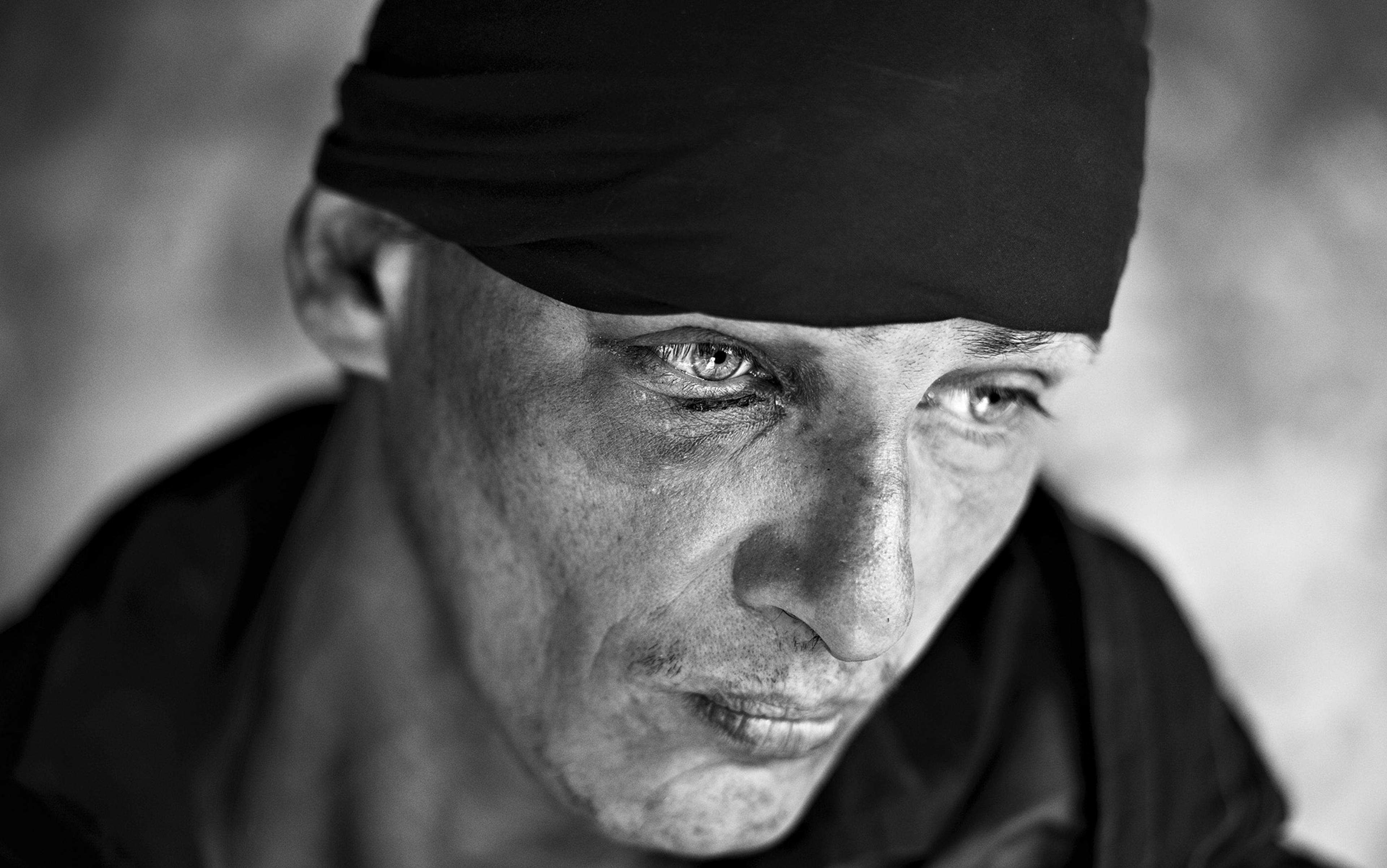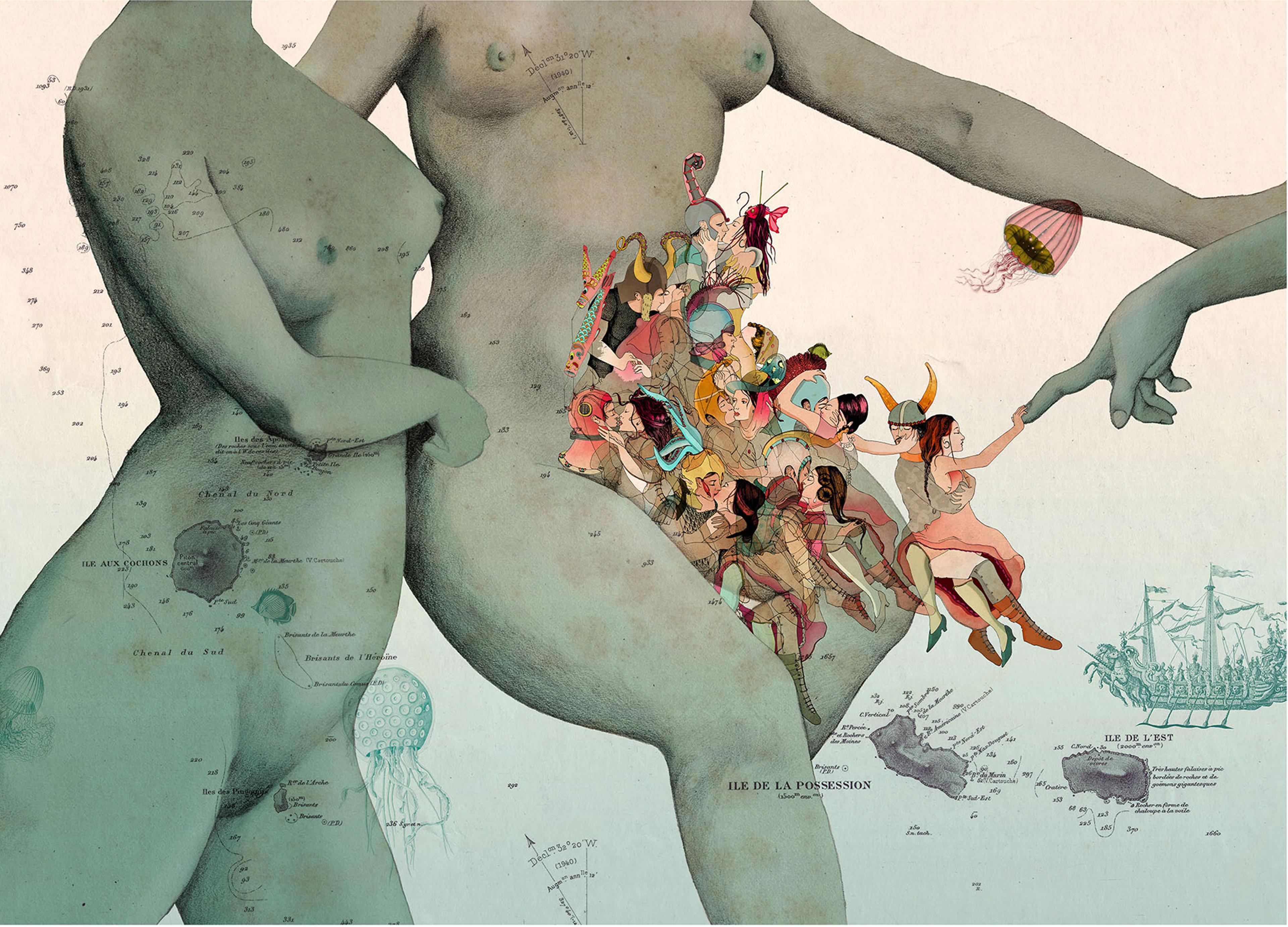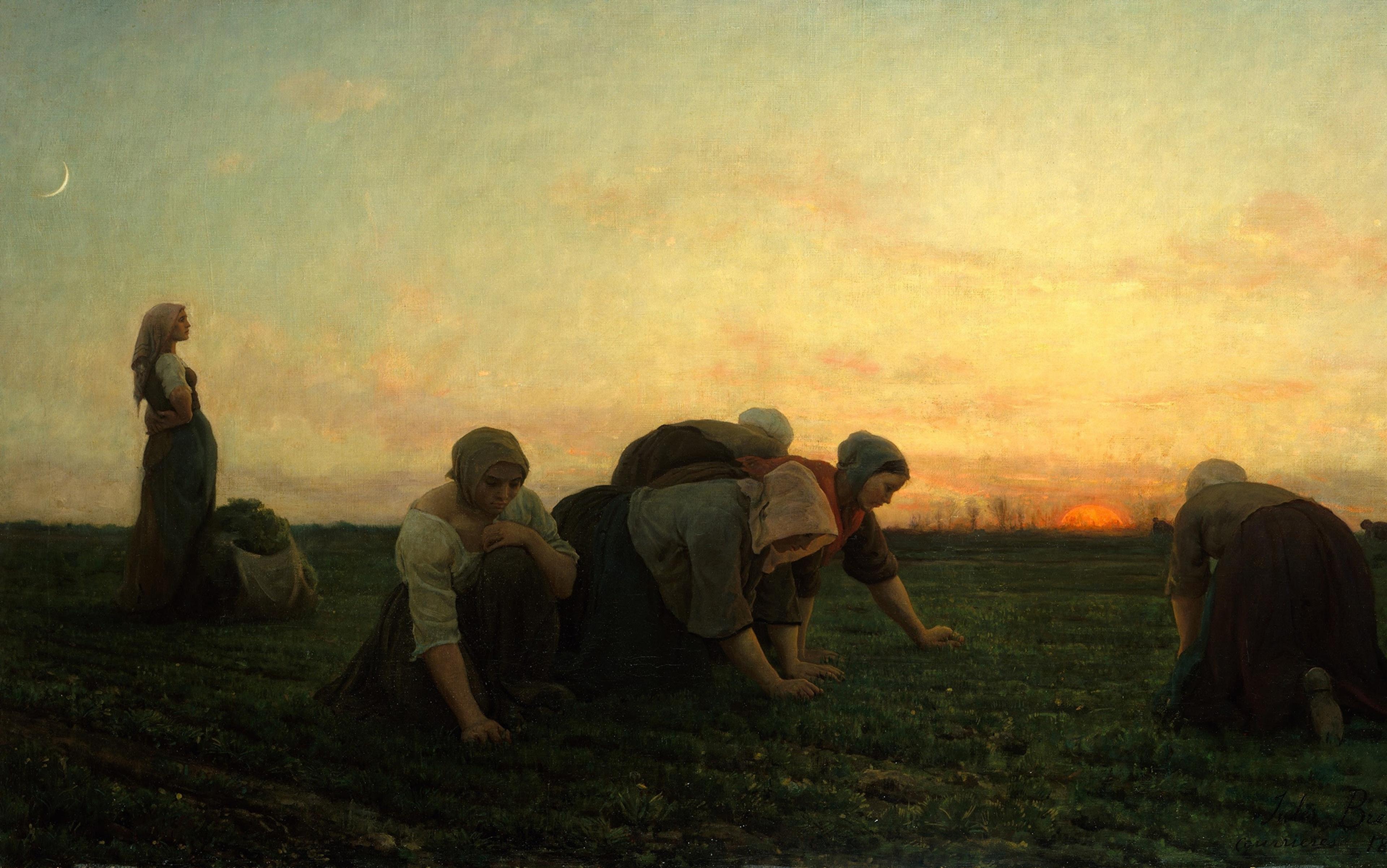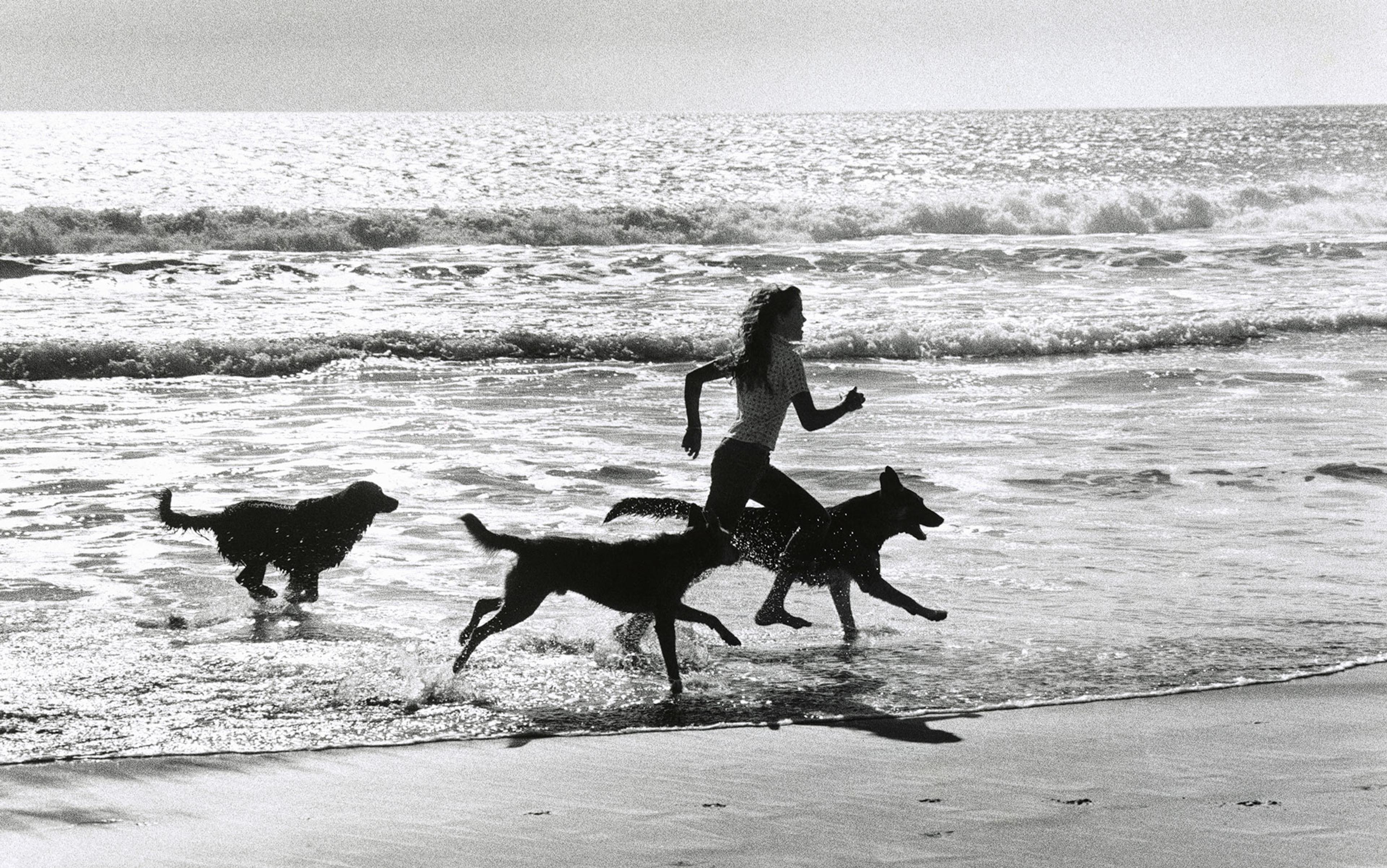Recently, I’ve noticed something strange about what my body does while I’m flicking through apps or reading on my phone. I’ve become conscious of my irregular breathing patterns, and how much tension I’m holding in my back and shoulders. The technologist Linda Stone has noted something similar, describing the way her breath becomes shallow, and sometimes temporarily stops altogether, when she sits down to work on her emails in the morning. She terms the problem ‘screen apnea’.
Perhaps even more striking for me, though, has been the realisation that I’m often simply unaware of my body altogether. It’s as though, when I enter into a digital ‘space’, my body as good as disappears. This perhaps explains why I’ve always found the narrative of online platforms competing to maximise and monetise ‘eyeballs on screens’ to be vaguely unsettling. The problem is not just that this paints a totally mechanistic picture of the human organism: it’s also that this disembodied picture aligns all too well with how it actually feels to be totally absorbed in some ‘content’ on my phone for 30 minutes at a stretch.
So while we know by now that tech can hijack the mind, what do we miss when we ignore what’s going on from a bodily perspective? Maurice Merleau-Ponty, the 20th-century French philosopher and influential voice within the tradition known as phenomenology, can serve as our guide here. He went further than any other Western thinker in placing our embodiment at the heart of an entire philosophical system. In our technologically mediated lives, Merleau-Ponty can help diagnose the unease we feel about the disappearance of the beating, pulsing body – and its reduction to the status of a mere object. Moreover, he elucidates what we overlook when we don’t make the body central to our understanding of our relationships with others and to the wider ecological context we’re immersed within.
To carry Merleau-Ponty’s insights into our everyday lives, I suggest that we can apply the simple notion of being present – carefully attending to the here and now of experience. Doing so flips the Western cultural tendency to privilege mind over body; it also brings a fresh perspective to practices such as mindfulness, which we’re often enjoined to use to counteract the distractibility and dissatisfaction of our digital lives. Perhaps most importantly, though, a return to embodied presence can lead us to a powerful critique of other dichotomies, such as self/other and human/nature. How might centring ourselves around our embodiment pave the way towards a radically different relationship with our communities, and even the larger ‘body’ of the Earth?
Merleau-Ponty’s work emerged from a richly embodied context of his own. The social and intellectual life of Paris in the late-1940s and ’50s, spilling out from the smoke-filled cafés and jazz bars of the Left Bank, must have been an exciting one to inhabit after the horrors and destitution of the Second World War. As Sarah Bakewell recounts in At the Existentialist Café (2016), Merleau-Ponty became friends with Simone de Beauvoir when they first studied philosophy together, both aged 19, and he got to know Jean-Paul Sartre shortly after. Some years later, the three of them would go on to launch the political journal Les Temps modernes. In contrast to Sartre (‘loud-mouthed’, ‘uncompromising’) and Beauvoir (‘a creature of strong judgments’), Bakewell portrays Merleau-Ponty as someone who generally ‘looked for multiple sides to any situation’.
Perhaps this quality, together with his ‘perfect ease’ in the company of others, is one reason why Merleau-Ponty was almost universally liked by those who met him. In contrast to most philosophers of his time, he was particularly taken by the mysteries and subtleties of non-verbal communication and eye contact. He claimed that we gesture and connect with one another through an expressive, ambiguous space of ‘intercorporeality’ – a space that exists among and between our bodies. Fittingly enough, Bakewell reports that Merleau-Ponty was regarded as hands-down the best dancer of all the thinkers in the Left Bank jazz scene at that time.
Merleau-Ponty’s insights started from the simple idea that we don’t so much ‘have’ as ‘inhabit’ our bodies, living with them and through them in a complex social world. To make this clear, he distinguished between two notions of the body. There’s the ‘objective body’ that, like other physical objects, has a particular size, weight, buoyancy and so on; it’s what you assess when you weigh yourself on the scales, say, or when you pose for a selfie. But far more important is what he called the ‘lived body’: the body through which we touch and feel and move. And this latter notion, he wrote, grounds us as being ‘body-subjects’ before all else.
This premise goes against the grain: from Plato through René Descartes and the scientific revolution, Western thinking has treated the body as secondary to the mind, an object in a world of objects. Merleau-Ponty understood the need to treat the body in this way when it came to specific scientific or empirical investigations. But as a general position on ‘how things are’, he found it to be deeply problematic, since the body as we actually experience it is not a mere object. You’d never need to ‘look for’ your right arm in the way you might look for a pair of scissors around your desk, as he quipped in Phenomenology of Perception (1945). More generally, he continued: ‘I cannot conceive myself as nothing but a bit of the world, a mere object of biological, psychological or sociological investigation.’ The underlying problem, Merleau-Ponty believed, was that philosophers had become so caught up in abstractions and theorisations about the world that they’d moved far away from the texture of what real life, as an experience and phenomenon, was actually like.
Merleau-Ponty wrote of the importance of adopting an ‘attentiveness and wonder’ towards the world
Phenomenology sought to address precisely this issue. The phenomenologist’s task – dating back to the pioneering work of Edmund Husserl around the turn of the 20th century – was to do justice to describing what our everyday, lived experience is actually like before rushing to explain it. Merleau-Ponty took up this challenge, and stuck to it throughout his career, with an ongoing interest in perception: ‘true philosophy’, he wrote in the introduction to Phenomenology of Perception, ‘consists in relearning to look at the world’.
In that early work, Merleau-Ponty set out two key insights that would become canonical. First, he said, we always find ourselves situated in a particular historical, physical and social setting. Rather than Descartes’s detached ego or the empiricist’s objective ‘view from nowhere’, Merleau-Ponty pointed out that, when you enquire into your everyday experience, you always find yourself in some way involved with the world around you. Seeing my neighbour leaving her flat at the same time as me, for example, I experience greeting her as a familiar person, as someone with meaning within my ‘situated’ life. In our day-to-day lives, we experience a shared world in which cultural objects – Merleau-Ponty cites roads, pipes, churches and villages – have meanings that we share with other people.
Secondly, Merleau-Ponty drew attention to the body being revealed not as a lump of matter but as the breathing, beating centre of our experience – the ‘lived’ body. And in contrast to the Enlightenment tendency to abstract towards a theoretical position of perfect objectivity, Merleau-Ponty described features of our embodiment that perhaps seem too obvious, and mundane, to mention: how you always perceive things from a particular perspective, how the particular configuration of your body means that you never directly see the back of your neck. Take the experience of depth: because I encounter a world that includes both my own body and yet spreads into the distance, the philosopher David Abram writes, ‘that cloud that I see can be a small cloud close overhead or a huge cloud far above; meanwhile what I had thought was a bird turns out to be a speck of dust on my glasses’. Through perception, the body is always called upon to engage, to choose, to focus the world before any verbal reflection comes into play, and sets the scene for whatever we go on to reflectively think and say and do. This is why Merleau-Ponty concluded that bodily engagement with the world is more basic than deliberation about it: not as a way of privileging the physical over the mental, but as a description of what it’s like to move through the world, mind and body working as one.
How might we apply this worldview to our highly ‘head-based’ lives? The notion of being present in the here and now, rather than getting caught up in the nonstop chatter of the mind, offers us a natural way to ‘live and breathe’ Merleau-Ponty’s philosophy. He wrote, in particular, of the importance of adopting an ‘attentiveness and wonder’ towards the world. To engage with the world phenomenologically, he suggested, we must embrace being ‘a perpetual beginner’: coming back again and again to what we perceive before us, remaining ‘open to the adventures of experience’.
This is especially pertinent in the digital era, and not only because of the ‘noise’ of limitless distractions. More pervasively, it pushes against the ‘solutionism’ that radiates outwards from Silicon Valley, in which human lives are interpreted as a series of problems to be solved through sophisticated analysis of data. On this view, things such as mindfulness practices – which can involve resting your attention on the sensations of breathing – become just another ‘life hack’. It’s true that these techniques can offer a host of benefits, including a boost to our capacity for metacognitive awareness – an awareness of our own negative (or positive) thoughts as thoughts rather than as unfiltered reality, which can help prevent relapses into anxiety and depression. But connecting to the aliveness of the breathing body offers us something more basic: these moments literally re-source us, putting us in contact, as body-subjects, with our most primordial mode of being. In tech circles, ‘dwell time’ is used to refer to how long a user spends on a particular webpage – but perhaps we can reclaim the expression for time spent intentionally dwelling in a state of embodied presence without seeking to ‘get’ anything out of it.
Of course, the word ‘mindfulness’ is somewhat at odds with a focus on embodiment, and some characterisations of mindfulness accentuate this apparent contrast. One popular analogy compares meditation with physical exercise: just as you work out in the gym to get bigger muscles, the analogy goes, mindfulness offers you a ‘mental workout’. This reinforces a mind/body split, with the role of the body reduced to little more than an object of attention. But if mindfulness is cast as ‘an alert participation in the ongoing process of living’, to cite the elegant definition of the Buddhist monk Henepola Gunaratana, then it seems to fit particularly well as a practical counterpart to Merleau-Ponty’s phenomenological worldview. This has been my own experience with meditation over the past decade or so: in exercises that involve observing not body sensations but thoughts and emotions as they arise, I can maintain an awareness of the lived body being there in the background. You learn to become more attentive not only to the lived body, but with it.
As well as embracing the body as a place to rest, seeing ourselves as body-subjects that reach out, touch and feel has profound implications for how we view our relationship with other people. The pandemic experience of 2020 has brought home just how much we typically rely on close physical contact with other people – and how much we suffer when this is brought to a halt.
It’s perhaps revealing that, for many philosophers, the very existence of others has often been presented as a puzzle. You’re talking to the postwoman, she gives every impression of being a person like you are – but how do you know she has conscious experience, and isn’t a sophisticated robot or zombie, lacking an inner life?
This ‘problem of other minds’, as it’s called, ceases to be a problem at all when we accept from the outset the embodied nature of our actual experience. As Merleau-Ponty wrote: ‘other minds are given to us only as incarnate, as belonging to faces and gestures’. To counter with distinctions such as mind/body ‘is of no use’, he said, if we permit ourselves to perceive the entirety (known as ‘the gestalt’) of what actually appears before us. Painters, he suggested, recognise this point:
Cezanne returns to just that primordial experience from which these notions [soul and body, etc] are derived and in which they are inseparable. The painter who conceptualises and seeks the expression first misses the mystery – renewed every time we look at someone – of a person’s appearing in nature.
Enquiring into our embodied experience also renders the subject-object distinction less clear-cut. Merleau-Ponty offers the following example: ‘when I press my two hands against one another … [I encounter] an ambiguous organisation in which the two hands can alternate in the function of “touching” and “touched”.’ Which hand is touching and which is touched? This ambiguity extends to our exchanges with other people. Imagine two teenagers, close friends, on a long walk along the coastline on a summer’s evening. Their hands brush against each other; but who touched whom, or whether there was even any intent at all, might not be clear – and this kind of ambiguity will always infuse our social interactions at some level.
It’s ultimately a bodily awareness of this ‘intertwining’ that fosters our sensitivity towards other people
Perceiver and perceived, then, are drawn into the cohesion of life. In the posthumous collection The Visible and the Invisible (1964), Merleau-Ponty wrote of the shared ‘interworld’ where ‘our gazes cross and our perceptions overlap’; it is here, he says, that the ‘intertwining’ of your life with other people’s lives is revealed. Far from a world of detached egos, or one of mere objects, what we encounter through embodied perception is this crisscrossing of lateral, overlapping relations with other people, other creatures and other things – an expressive space that exists between lived bodies. It’s not that we are all ‘one’, but that we inhabit a world in which, to quote the philosopher Glen Mazis, ‘things, people, creatures intertwine, interweave, yet do not lose the wonder that each is each and yet not without the others’.
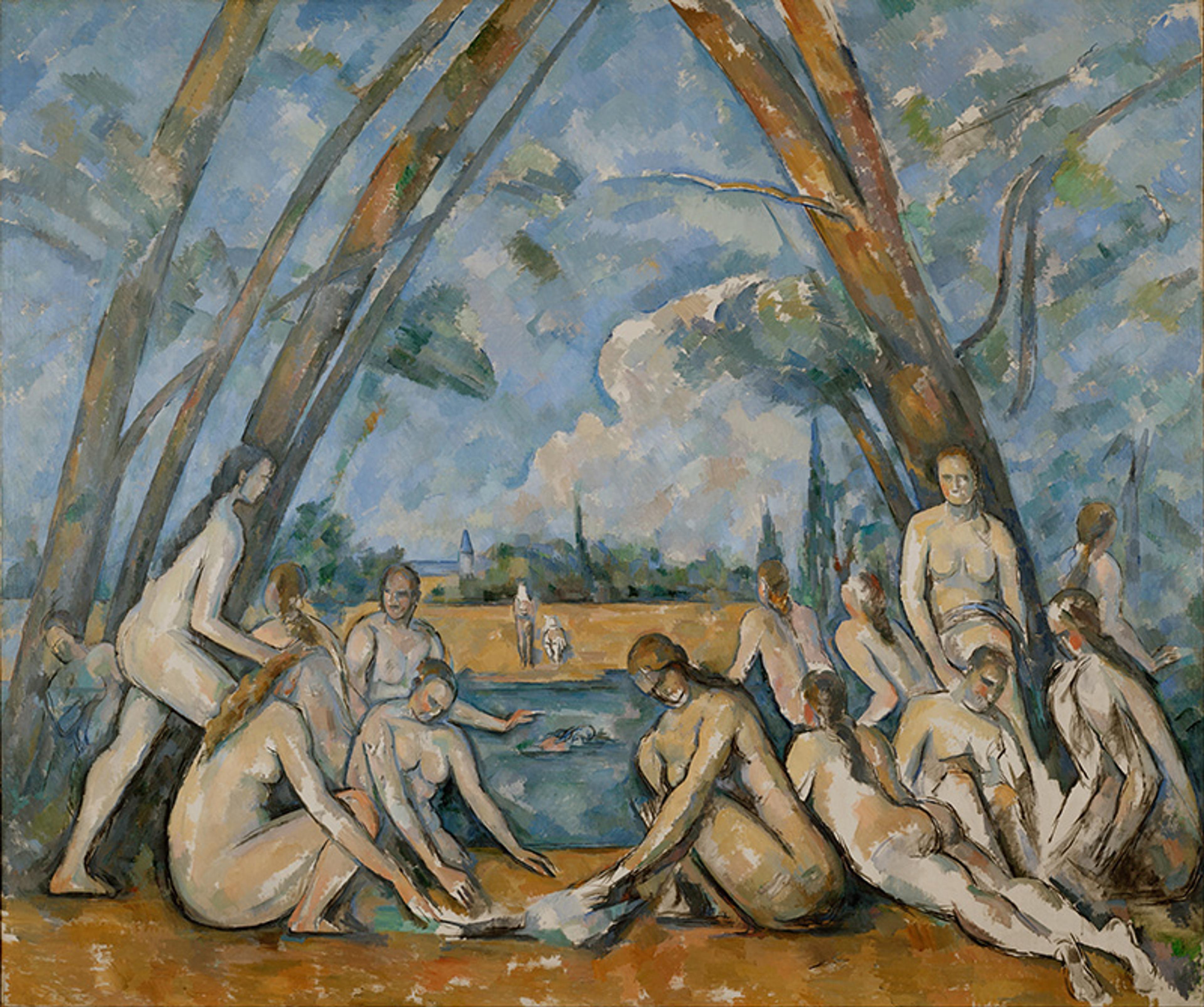
The Large Bathers (1900 - 1906) by Paul Cezanne. Courtesy the Philadelphia Museum of Art
It’s ultimately a bodily awareness of this ‘intertwining’ that fosters our sensitivity towards other people, Merleau-Ponty believed – what Mazis calls ‘embodiment’s access to the heart’. Intimacy, connection and compassion rest on our perceiving one another: not so much an intellectual grasp of the other as a ‘conscious agent’ but the felt sense of this embodied, sensitive and vulnerable being before me. I’m reminded of the powerful image of Patrick Hutchinson, the Black Lives Matter demonstrator who bravely carried a counter-protester to safety during the protests in London in the summer of 2020. Describing his decision to step in, Hutchinson told Channel 4 news:
His life was under threat, so I just went under, scooped him up, put him on my shoulders, and started marching towards the police with him … You don’t think about it [being scary] at the time, you just do what you’ve got to do.
It’s perhaps not surprising, then, that detailed descriptions of face-to-face encounters feature throughout Merleau-Ponty’s work – for it is here that we meet directly with flashes of the joys, losses, hopes, dreams, interpretations and dedications of the lives of others.
By contrast, if we render those encounters ‘faceless’, Merleau-Ponty wrote, we experience the world as ‘only a succession of facts’. This speaks to the tinge of sadness I feel when I board a bus to find that everyone around me is hooked on their screens. I freely admit, there’s some nostalgia here. But there does seem to be a social ‘feel’ of disembodiment in this situation – a sense that all of us are there as just a collection of ‘objective’ bodies, absentees from the expressive, ambiguous space of the lived interworld.
These insights about the social function of embodied experience can serve as a corrective to the charge of individualism that is sometimes made against Western mindfulness programmes. True, sitting still, with my eyes closed, is one way to practise mindfulness. But it builds the capacity to attend more receptively to the world in general, which Merleau-Ponty makes clear is so often social in nature. Practitioners often report that mindfulness helps them cultivate a greater sense of intimacy during interactions with others – to listen more attentively, and to attend to other nonverbal cues in more detail (empirical research corroborates this). Properly appreciated, then, mindfulness can be socially connective.
Our intertwinement with others extends, equally, to our relationship with the natural world – a theme that Merleau-Ponty was increasingly drawn towards in his later writings. In The Visible and the Invisible, he introduced his nuanced notion of the ‘flesh of the world’ (or simply the ‘flesh’). Beyond the usual meaning of the word, he uses the term to refer to a primordial and mysterious tissue that underlies, and gives rise to, both the perceiver (such as the human subject) and the perceived. The flesh, then, underlies not just our interwovenness into the world through looking and being looked at, but equally ‘the staring eyes of cats [and] the raucous cries of birds who fly in patterns we have yet to decipher’, as Abram puts it. Fundamentally, Abram writes, the flesh is the elemental tissue that gives rise to the web of Earthly life that comprises both the organic and inorganic together.
Mirroring his emphasis on the primacy of the lived body, Merleau-Ponty believed that this web of life can be taken first and foremost not as a set of objective entities and processes, as is generally assumed in environmental debates. Rather, it’s the biosphere as it’s lived from within – from the particular vantage point that we ‘human’ animals happen to have (as creatures that are sensitive, intelligent, social and so on). Just as we inhabit our bodies, we also inhabit the greater ‘body’ of the Earth.
The more we open up to seeing ourselves as radically intertwined with the natural world, Merleau-Ponty felt, the more this relationship comes to resemble a two-way dialogue, recognising that there is always some of ‘us’ in ‘nature’ and some of nature in us. By letting go of cognitive or biological hierarchies in favour of a system of lateral relations between us and other life forms, we are invited to really listen to what ‘speaks’ to us from the nonhuman world when we let the usual noise levels subside. Citing the French poet Paul Valéry, Merleau-Ponty even questioned whether there’s a sense in which language is, before all else, ‘the very voice of the trees, the waves and the forest’.
Which technologies help us inhabit a shared world, rather than one in which we each see vastly different realities?
The practice of returning to the breath can be an ideal way to capture what Merleau-Ponty is getting at here. In my own experience, I’ve noticed that the more often I meditate and check in with my breath throughout the day, the more receptive I am to my natural surroundings. When I walk through the woods near my house, for example, I’ll notice much more fully the sound and feel of the breeze, the raucous squawk of a crow overhead or, if I’m lucky, the briefest moment when a small mouse, perched on a log, meets my gaze before scurrying off into the undergrowth. Returning to the breath and the body, Abram writes, we recognise and affirm ‘our corporeal immersion in the depths of a body much larger than our own’.
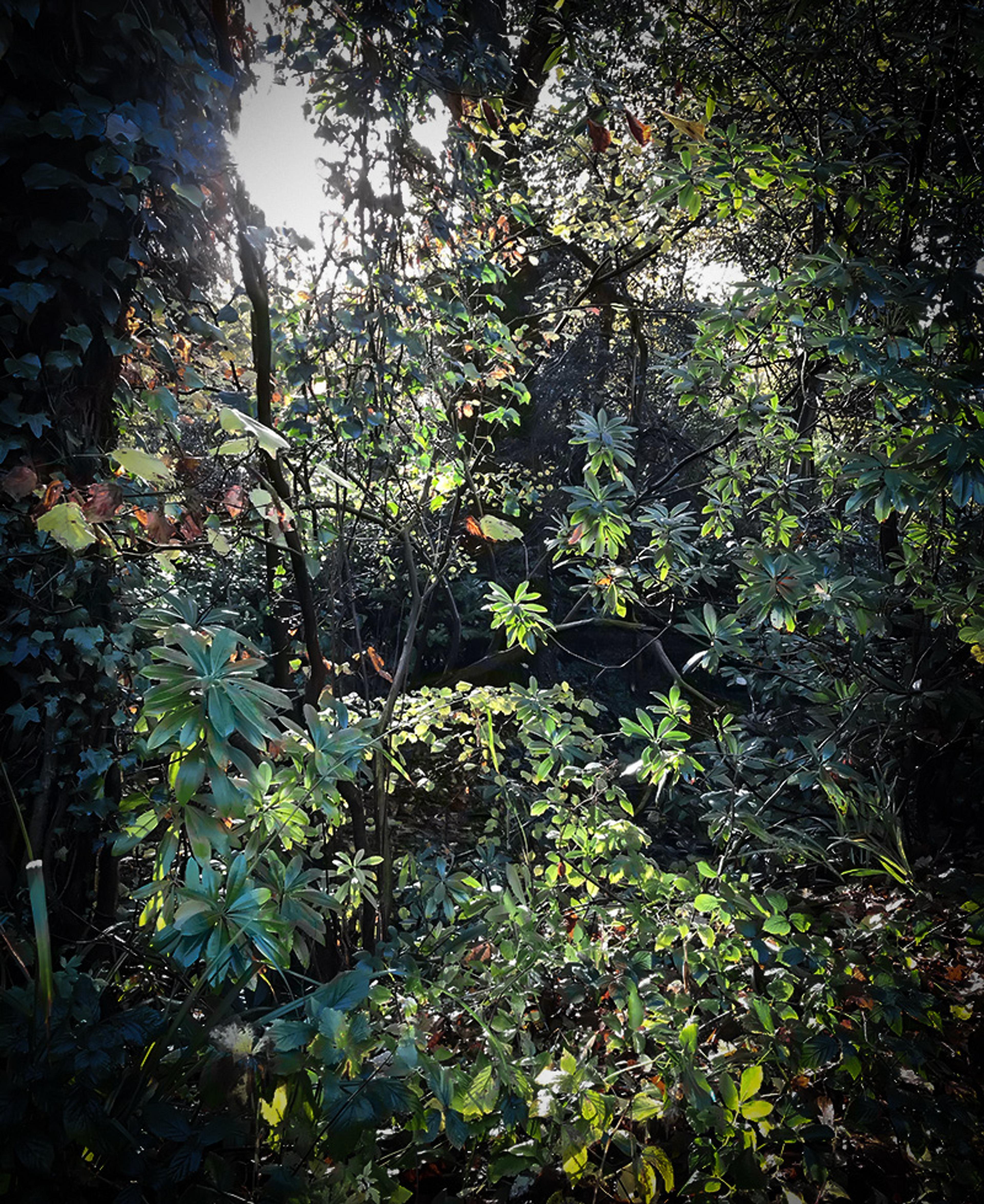
Photo courtesy the author
What would Merleau-Ponty prescribe as a corrective to some of the problems of the present moment – the polarisation of our political views, the sense of constant digital overwhelm, the erosion of a shared space for intercorporeality?
What’s needed, at the most basic level, is an ongoing attentiveness to what’s there before us – and an ongoing vigilance regarding what we are normalising in both our online and offline environments. Fittingly, Merleau-Ponty came to the view that ‘philosophy is not a particular body of knowledge; it is the vigilance which does not let us forget the source of all knowledge’.
That vigilance means regularly checking in with our own state of embodiment, appreciating the value of doing this for its own sake. We can call out worldviews that treat the body as a mere object – which reduce us, in Merleau-Ponty’s words, to ‘puppets that move only by springs’, that experience the world as ‘only a succession of facts’ in which the lived body is absent.
It means staying alive to the depth and quality of our interactions with others, noticing how intimacy depends upon our participation in a shared perceptual world in which our lived bodies ‘show up’. We must interrogate for ourselves which technologies genuinely support this kind of connection and help us inhabit a shared world, rather than one in which we each see vastly different realities.
And it means slowing down, even – especially – when that’s the hardest thing to do, if we are to allow a two-way dialogue with the natural world to emerge, if we are to hear the ‘message’ nature is sending us, as Inger Andersen, the head of the UN Environment Programme, put it at the outset of the coronavirus outbreak in January 2020.
Our lived bodies are here to facilitate just this kind of vigilance. The silent body is ‘the hint half guessed, the gift half understood’, to quote T S Eliot in Four Quartets (1943). We cannot grasp it or ‘own’ it or subject it to an ultimate analysis. But if we’re willing to slow down, to pause, to touch in with the pulsing, breathing lifeworld of the body throughout the day, then we can restore our presence, our aliveness, our precious connection with other beings and things no less vital for the fact that they are other to us.
